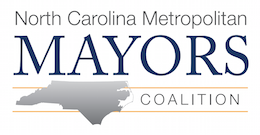AUGUSTA, Maine — The Cooks Corner interchange in Brunswick, one of the busiest in the state, hadn’t been repaved since the 1980s, leaving shoppers traveling to nearby malls and tourists driving to scenic Bailey and Orr’s islands to bump over ruts and potholes.
But thanks to a new state transportation program turning some control back to local communities, that section of Route 24 and adjacent roads were repaved this summer. The city applied to the state Department of Transportation for funding in March, and the work was completed in July.
It’s a practical example of one of Gov. Paul LePage’s administration’s core principles, proponents say: cutting red tape and empowering local government.
Under DOT’s Municipal Partnership Initiative, some municipalities get to decide — within some parameters — which roadwork gets completed locally. It’s a new initiative aimed at reducing red tape, expediting construction and creating a partnership that provides good results for both DOT and local communities.
Conceived and developed early last year, the Municipal Partnership Initiative is touted as a creative way to join state and municipal money.
Currently, the new program does not represent a big part of DOT’s spending — just $7.8 million of the department’s total annual construction budget of nearly $500 million.
But Dale Doughty, DOT’s director of operations and maintenance, said the success of the first round of projects — completed during the warm weather months of 2011 and this year — encouraged the department to continue the program, and perhaps add more money in future budgets.
The way DOT completes roadwork has been to develop multiyear plans, identifying work around the state in a priority list. In those cases, no local money is used.
“But they are projects that the department choses,” Doughty said. Under the partnership program, “towns, at their discretion, could come to us,” with their proposals.
The projects for which the municipalities seek state money under the new program are often of low priority for the state, but high priority locally. The program even allows local design with local values in mind.
“If they have a nickel in it,” Doughty said of the municipalities, “our motives become very commingled.”
And it’s more than a nickel. The state will contribute up to 50 percent of the funds. Municipalities can pay the other half, or even solicit private money to get the work done.
To date, nearly 40 Municipal Partnership Initiative projects have been completed.
The Brunswick project cost $700,000, said John Foster, the city’s public works director, with the state and municipality splitting the bill 50-50. Foster praised the program.
“It was very straightforward,” he said. “We got quick answers from them” with “minimal paperwork” required. “It went along really smoothly.”
The city wanted the work to be done at night because of the busy nature of the interchange, and it was able to make that decision unilaterally.
Orono also wanted to pave and improve three key intersections and proposed that the projects be funded in DOT’s multiyear work plan. Just one was funded by the state, so the town applied for and received Municipal Partnership Initiative approval for work at the intersection of College Avenue and Park Street, a project that hadn’t made DOT’s list.
Town Manager Sophie Wilson said the state agreed to pay up to $68,000 for the work, and the town will spend close to that amount as well. The project is being designed and electrical work is expected to be completed this winter. Paving will be done in the spring, Wilson said, which would not have been fiscally possible without the Municipal Partnership Initiative.
Mike Roy, Waterville’s city manager, had high praise for the program. In a three-way cost-sharing agreement, Colby College, the town and the DOT program paid to improve a road near the college.
“It definitely happened faster,” Roy said, through the Municipal Partnership Initiative. “It worked out very, very well.”
Roy said a skeptic could argue that these state-aid or state highways are DOT’s responsibility, and that municipalities shouldn’t have to pay any part of their repair.
“The state simply doesn’t have the money to do what needs to be done,” he said. “There’s been a paradigm shift.”
In the town of York, Doughty said, officials needed to separate storm water runoff from sewage, and in so doing road surfaces had to be torn up. The partnership program helped pay for the repaving, in part because the roads needed such work anyway, and in part because DOT wanted to help the town accomplish its environmental goals.
“That was a good win-win,” he said.
Doughty offers other examples of how the Municipal Partnership Initiative may be used. A town might want to improve road pavement in a downtown area because it could help spur investment, but such work would not be a DOT priority. Or a stretch of road could have perennial drainage problems which does not affect the transportation links DOT worries about, but does cause local problems.
Some of the criteria for consideration by DOT are that projects improve safety, boost economic development and create roads that require less maintenance and improve mobility.
“We want projects that are viable,” Doughty said, and ready to go in the next construction season. “While the money is there, we can move these pretty quick,” he said, by reducing red tape.
DOT spokesman Ted Talbot gave Commissioner David Bernhardt credit for the concept.
“Local control isn’t just about politics,” Talbot said. “It’s also about infrastructure.”
(Bangor Daily News)
By Tom Groening, BDN Staff
Posted Dec. 05, 2012, at 11:33 a.m.


